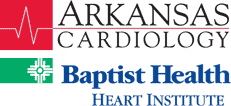Patient Education
The Heart
The heart is a hollow organ located approximately in the center of your chest and is the size of your fist. It is made of a special muscle tissue called myocardium and constantly pumps blood throughout the body. The heart is divided into four chambers. The two upper chambers (the right and left atria) receive and collect blood that reaches the heart from the body. The two lower chambers (the right and left ventricles) pump blood to the body. The four chambers are separated by one-way valves that prevent blood from flowing backwards. The atria and ventricles work together to circulate blood, providing oxygen and nutrients throughout the body.
Heart Valves
The heart contains four valves that open and close, allowing blood to flow in one direction. The tricuspid and bicuspid valves separate the atria from the ventricles. When these valves are closed, the atria fill with blood. When the atria contract and the valves open, blood moves from the atria to the ventricles below. When the ventricles contract, the semilunar valves, located at the beginning of the pulmonary arteries and aorta, open and blood is pumped.
Pulmonary arteries/veins
The pulmonary arteries carry the blood that has just returned to your heart from your body to your lungs, where the blood picks up a new supply of oxygen. The blood then travels back to your heart through the pulmonary veins to be pumped into your body.
The Aorta
The aorta is the largest artery in your body and carries freshly oxygenated blood from your heart to the rest of your body. The aorta travels from the left ventricle, over the top of your heart, curving down behind your heart toward your legs. At about the level of your belly button, the aorta divides into two vessels, the femoral arteries, which go to your legs. Along the aorta, smaller arteries branch off and carry blood to different parts of the body.
Coronary arteries
Like the rest of your body, your heart needs a continuous supply of oxygen. The coronary arteries carry oxygen-rich blood to the heart muscle.
As blood leaves the left ventricle, it begins its journey into your body through the aorta. At the beginning of the aorta, near the top of the heart, two arteries branch off and go directly to the heart muscle. These are the “left” and “right” coronary arteries.
The first part of the left coronary artery is the left main artery. It is the width of a straw and less than an inch long. The left main artery divides into the left anterior descending artery, which goes down the side of the heart, and the left circumflex, which surrounds the left side and then toward the back of the heart.
The right coronary artery comes from the aorta, circulates around the right side and then to the back of your heart.
The coronary arteries are on the surface of your heart and gradually divide into smaller branches. These penetrate deep into the heart muscle and carry oxygen-rich blood to the cells.
Electrical System
Unlike the muscles in your arm or leg, you cannot voluntarily control the contraction of your heart muscle. Your heart contracts and relaxes on its own due to a specialized electrical system in your own heart. This special tissue carries electrical signals along pathways through your heart every time it beats. This system ensures that all four chambers of your heart beat in the proper sequence.
In a healthy heart, the electrical signal starts in the sinoatrial node (also called a sinus node or SA node) and then travels throughout the heart. Located in the right atrium, the SA node is the heart’s natural pacemaker and normally starts between 60 and 80 beats per minute in a normal person at rest. If a person is active or exercising and the body needs more oxygen, the SA node increases the heart rate accordingly.
If the SA node generates a normal heartbeat, the heart is said to have a normal sinus rhythm. If the heart’s electrical system is interrupted, delayed, or stopped, heart rhythm disturbances (arrhythmias) may occur.
Circulation
The right atrium receives the blood that reaches your heart from your body. This blood is low on oxygen and must be replenished before returning to the rest of your body. When the atria contract, blood from the right atrium passes through the now open tricuspid valve into the right ventricle. When the ventricles contract, poorly oxygenated blood from the right ventricle travels through a crescent valve into the pulmonary arteries and lungs. Here, the blood picks up a new supply of oxygen and circulates back to the heart through the pulmonary veins. This oxygen-rich blood enters the left atrium. When the atria contract, blood from the left atrium passes through the bicuspid valve into the left ventricle. When the ventricles contract, blood from the left ventricle passes through another semilunar valve into the aorta. From here, it is distributed throughout the body, delivering its oxygen and nutrients. Eventually, blood returns to your heart and enters the right atrium to repeat the entire process.
A healthy heart beats about 100,000 times a day and pumps about five quarts of blood per minute or 75 gallons per hour.

